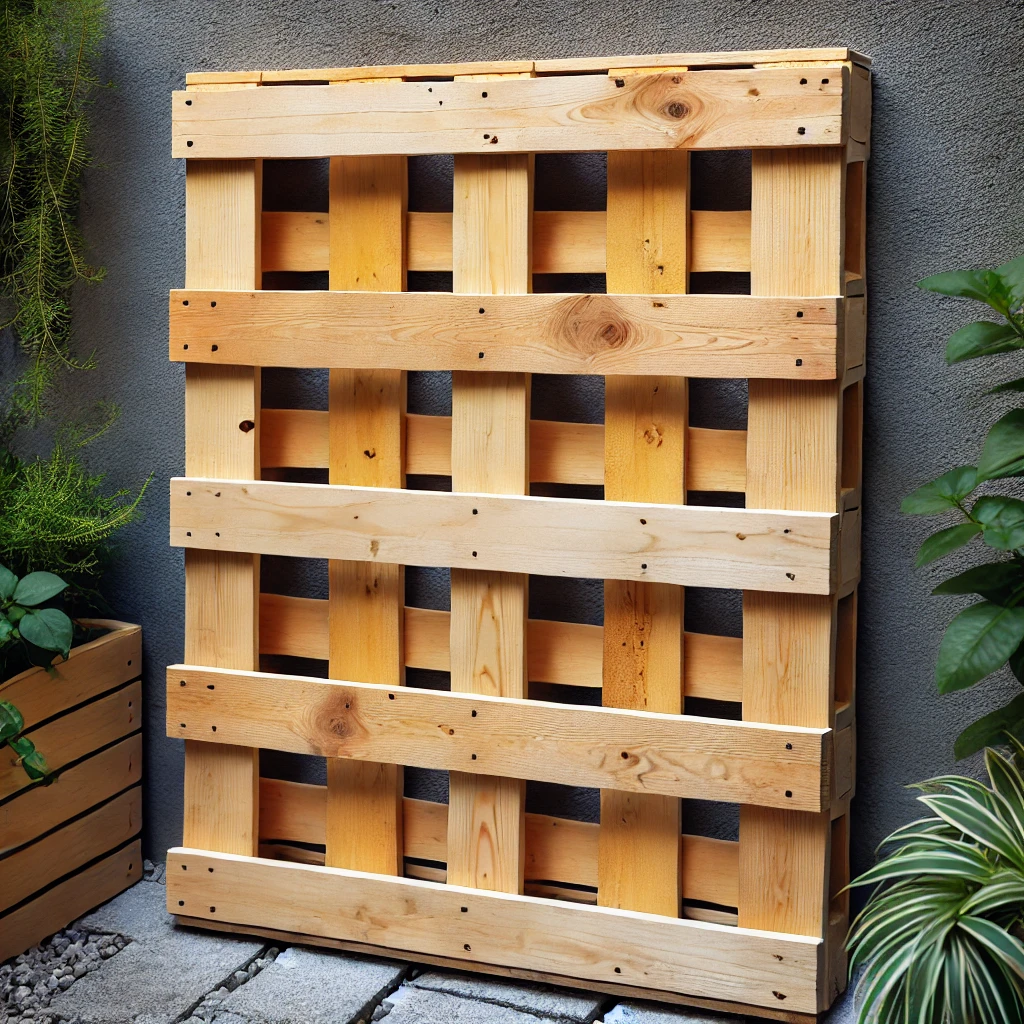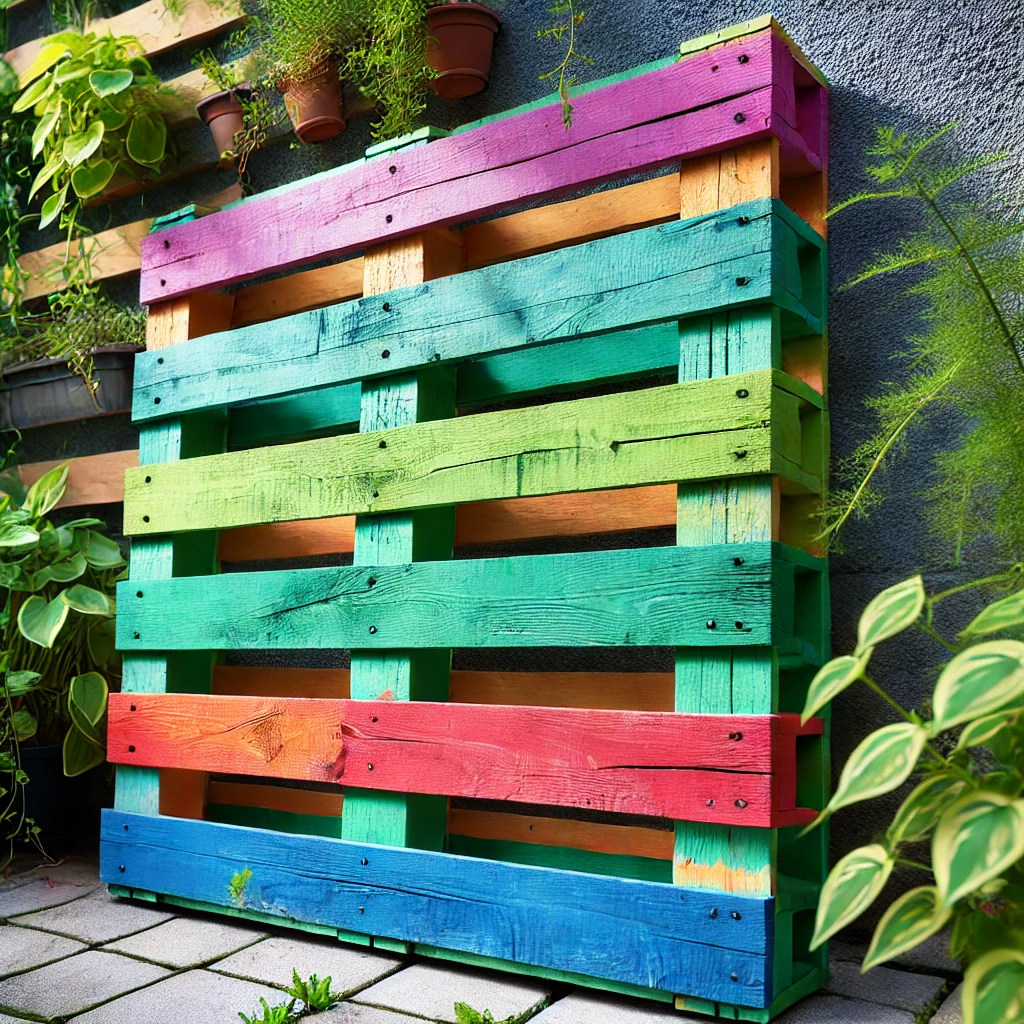Introduction
Hey there, garden lovers! 🌱 If you're short on space but still want a thriving garden, a vertical pallet garden is a fantastic solution! Not only does it save space, but it also adds a charming and rustic vibe to your gardening area. In this DIY guide, we'll show you how to create your own vertical pallet garden using easy-to-find materials. This project is perfect for growing 🌿 herbs, 🌸 flowers, or even 🥬 leafy greens in a compact, organized way.
Materials You'll Need
- 📦 Wooden pallet (make sure it’s clean and untreated)
- 🪚 Sandpaper
- 🧵 Landscaping fabric
- 🔫 Staple gun and staples
- 🌱 Potting soil
- 🌿🌸 Plants (herbs, flowers, or small vegetables)
- 🔨 Nails and hammer (optional)
- 🎨 Paint or wood stain (optional, for aesthetic purposes)
Step-by-Step Instructions
1. Choose Your Pallet
Look for a pallet that’s sturdy and clean. Ensure it’s untreated to avoid harmful chemicals that could affect your 🌱 plants. You can usually find pallets at local hardware stores or online marketplaces. If you can't find a pallet, you can make one using sturdy wooden boards. Just assemble them to form a similar structure, ensuring they are untreated and safe for planting.

2. Prepare the Pallet
🪚 Sand down the pallet to remove any rough edges or splinters. This will help prevent injury and create a better surface if you decide to 🎨 paint or stain it. If you'd like to add a splash of color, now's the time to paint or stain the pallet.

3. Attach the Landscaping Fabric
To keep the 🌱 soil in place, attach landscaping fabric to the back and bottom of the pallet. Use a 🔫 staple gun to secure it tightly, covering all gaps where soil could escape. This step essentially turns your pallet into a vertical container for 🌿 plants. Once done, it should look like a colorful painted pallet with fabric covering the back, ready to hold the soil securely.
4. Add Soil
Lay the pallet flat on the ground with the fabric side down. Fill each section between the wooden slats with 🌱 potting soil, making sure it’s evenly distributed. Gently pat the soil down to minimize air pockets.
5. Plant Your Greenery
Carefully plant your chosen 🌿 herbs, 🌸 flowers, or 🥬 vegetables into the soil. Make sure to place plants that require similar ☀️ sunlight and 💧 watering needs together. This will make caring for them easier.
6. Let It Settle
Before standing the pallet upright, leave it flat for about a week to allow the plants to root in securely. This helps prevent soil from spilling out when you lift it vertically.
7. Stand It Up and Display
Once your 🌱 plants have established some roots, carefully lift the pallet and place it against a wall or fence in your garden. Make sure it’s in a spot where your plants will get enough ☀️ sunlight.
8. Water and Care
💧 Water your vertical garden carefully to ensure all plants are evenly watered. Vertical gardens may dry out more quickly, so keep an eye on soil moisture and water more frequently if needed.
Tips for Success
- Plant Selection: 🌿 Herbs like thyme, basil, and mint, or 🌸 flowers like petunias and marigolds, work great in a vertical pallet garden.
- Sunlight: Ensure your vertical garden is positioned where it will get enough ☀️ sunlight for your specific plants (usually 6-8 hours for most herbs and flowers).
- Aesthetic Touch: Add hooks to the sides for hanging garden tools or decorative items. 🛠️🎀
Conclusion
A vertical pallet garden is a perfect way to utilize limited space, create a beautiful feature in your garden, and grow fresh 🌿 herbs or 🌸 flowers at home. This project is simple, affordable, and customizable to your space and aesthetic preferences.
Share Your Vertical Garden!
Have you tried making your own vertical pallet garden? 📸 Share photos and tips with the Soil Talks community! Let’s 🌱 grow and inspire each other.